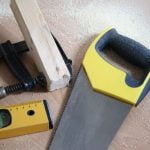Are you considering making significant updates or renovations to your home? If so, you may be wondering how to fund these projects. One option that many homeowners turn to is a home improvement loan.
These loans are specifically designed to provide financing for projects that can enhance the value and livability of your home. But how do you secure a home improvement loan with equity? In this article, we will guide you through the process of obtaining a loan by leveraging the equity in your home.
Before diving into the details, it’s important to understand what exactly a home improvement loan is and why equity plays a crucial role in securing it. A home improvement loan is a type of financing that allows homeowners to borrow money specifically for renovating or repairing their homes.
This could include everything from remodeling a kitchen or bathroom, adding an extension, or even improving energy efficiency. These loans typically have more flexible terms compared to traditional mortgages and often offer competitive interest rates.
Equity refers to the difference between the current market value of your home and the outstanding balance on your mortgage. When it comes to obtaining a home improvement loan, having equity in your property is essential. Lenders consider equity as collateral for repayment of the loan.
The more equity you have, the higher the chances of qualifying for larger loan amounts at lower interest rates. This is because there’s less risk involved for lenders when they can rely on your property’s value as security.
Now that we’ve established what a home improvement loan is and why equity matters, let’s delve deeper into understanding home equity and how it plays a vital role in getting approved for these types of loans.
By gaining insights into assessing your own equity and identifying your specific renovation needs, you’ll be better prepared to explore different loan options available, choose the right lender, prepare your application effectively, maximize your loan amount based on your available equity, and increase your chances of success in securing a home improvement loan.
Understanding Home Equity
What is Home Equity?
Home equity refers to the value of ownership that homeowners have built up in their property over time. It is the difference between the current market value of your home and the amount you still owe on your mortgage. For example, if your home is valued at $300,000 and you still have $200,000 left to pay on your mortgage, then you have $100,000 in equity.
Why is Home Equity Important for Getting a Loan?
Home equity plays a crucial role when it comes to securing a loan for home improvements. Lenders are more likely to approve a loan when there is sufficient equity in the property because it acts as collateral. In simple terms, if borrowers default on their loan payments, lenders can seize the property and sell it to recover their money. Therefore, having significant equity in your home provides reassurance to lenders that they will be able to recoup their investment.
In addition, having enough home equity can also help homeowners access lower interest rates and more favorable loan terms. Lenders consider homeowners with higher levels of equity as less risky borrowers. This reduced risk allows lenders to offer better loan terms compared to those without significant equity.
Effects of Market Fluctuations on Home Equity
Understanding that home equity can fluctuate is essential for homeowners considering a home improvement loan. The market value of properties can be influenced by various factors such as economic conditions and real estate trends. It’s important to keep in mind that changes in market value can affect your available equity.
During periods of economic growth or if you make substantial improvements to your property, your home’s value may increase, thus potentially increasing your equity. Conversely, during economic downturns or if there is a decline in demand for homes in your area, the value of your property may decrease, consequently reducing your available equity.
It is crucial to stay informed about market conditions and regularly assess your home’s value to make informed decisions when applying for a home improvement loan.
Understanding home equity is the first step in obtaining a home improvement loan. Calculating your equity and recognizing its importance to lenders will help you determine if you have enough equity to proceed with your renovation plans. In the next section, we will guide you through assessing your home equity so that you can confidently apply for a loan that meets your needs.
Assessing Your Home Equity
Calculating the amount of equity you have in your home is an important step in getting a home improvement loan. Equity represents the value of your home that you actually own, and it serves as collateral for the loan. By accurately assessing your home equity, you will have a better understanding of how much you can borrow for your renovation project.
The first step in assessing your home equity is to determine the current market value of your property. This can be done by hiring a professional appraiser or by conducting research on recent sales prices of similar homes in your area. Once you have this information, subtract any outstanding mortgage balance from the market value to calculate the current equity.
Another important factor to consider is the loan-to-value (LTV) ratio required by lenders. LTV ratio is calculated by dividing the amount of mortgage debt by the appraised value of the property. Most lenders typically require a maximum LTV ratio of 80% for home improvement loans. This means that if your current LTV ratio exceeds 80%, you may not be eligible for certain loan options or may need to pay private mortgage insurance.
| Step | Action | Result |
|---|---|---|
| 1 | Determine market value of home | $400,000 |
| 2 | Calculate outstanding mortgage balance | $250,000 |
| 3 | Subtract mortgage balance from market value | $150,000 (current equity) |
| 4 | Calculate current loan-to-value (LTV) ratio | 62.5% |
Remember that home values fluctuate over time, so it is recommended to reassess your home equity periodically, especially if you are considering a major renovation project. Understanding your home equity is crucial in determining the loan amount you can obtain and ensuring that you have sufficient collateral for the loan.
In the next section, we will discuss tips for identifying your home improvement needs and estimating the cost of your renovation project.
Identifying Your Home Improvement Needs
Before you begin the process of obtaining a home improvement loan with equity, it’s important to have a clear understanding of your renovation needs. This will help you determine the scope and cost of the project, which will ultimately inform how much financing you will need. Here are some tips to help you identify your home improvement needs:
Evaluate Your Home
Start by thoroughly evaluating your current living space and identifying areas that need improvement. Consider factors such as functionality, aesthetics, and safety. Make a list of the specific changes you would like to make, whether it’s updating your kitchen or bathroom, adding an extension, improving energy efficiency, or enhancing curb appeal.
Set Priorities
Once you have identified all the potential areas for improvement, it’s important to prioritize them based on your needs and budget. Determine which renovations are essential and critical for your home. For example, if you have outdated plumbing or electrical systems that pose safety risks, these should take precedence over cosmetic enhancements.
Estimate Costs
After prioritizing your renovation needs, research and gather information about the estimated costs for each project. This can include obtaining quotes from contractors or doing some market research on material costs. Take into account any additional expenses such as permits or design fees as well. By having a rough estimate of the costs involved, you can better assess how much funding you will require from a home improvement loan.
By following these tips for determining the scope and cost of your renovation project, you’ll be better prepared when applying for a home improvement loan with equity. Having a clear understanding of your needs and costs will not only help streamline the application process but also ensure that you secure adequate financing to complete your desired renovations.
Researching Loan Options
When considering a home improvement project, it is important to research and understand the various loan options available to homeowners with equity. Home improvement loans can provide the necessary funding for renovations and upgrades, allowing homeowners to enhance their living spaces and increase the value of their property. Here are some common types of home improvement loans that homeowners with equity can consider:
- Home Equity Loans: A home equity loan allows homeowners to borrow against the equity they have built up in their property. This type of loan typically provides a fixed amount of money with a fixed interest rate, which is paid back in regular monthly installments.
Homeowners can use this loan to fund their entire renovation project or a portion of it. Additionally, interest on home equity loans may be tax-deductible, making them an attractive option for many borrowers. - Home Equity Lines of Credit (HELOC): Similar to a home equity loan, a HELOC allows homeowners to borrow against the equity in their homes. However, instead of receiving a lump sum upfront, borrowers are given access to a line of credit that they can draw from as needed during a specified draw period.
The interest rates for HELOCs are usually variable and borrowers only pay interest on the amount they withdraw. This flexibility can be beneficial for those who expect their renovation costs to fluctuate over time. - Cash-Out Refinance: A cash-out refinance involves replacing an existing mortgage with a new one that has a higher balance than the original loan amount. The homeowner receives the difference in cash, which can then be used for home improvements. This option allows homeowners to take advantage of lower interest rates and potentially extend their repayment term while accessing funds for renovations.
It is important for homeowners to compare and evaluate these loan options based on factors such as interest rates, fees, repayment terms, and eligibility requirements before making a decision. Consulting with financial advisors or loan specialists can also provide valuable insights and guidance in selecting the most suitable loan option for specific home improvement needs.
| Loan Type | Description |
|---|---|
| Home Equity Loan | A fixed amount loan with a fixed interest rate, paid back in monthly installments |
| Home Equity Line of Credit (HELOC) | A line of credit that allows homeowners to borrow against their equity as needed during a specified draw period |
| Cash-Out Refinance | Replacing an existing mortgage with a new one that has a higher balance, providing cash for renovations |
Choosing a Lender
Once you have assessed your home equity and identified your home improvement needs, the next step is to choose a lender who will provide you with the necessary funds for your project. Selecting the right lender is crucial as it can significantly impact the terms of your loan and ultimately determine the success of your renovation.
One important factor to consider when choosing a lender is interest rates. Different lenders may offer varying interest rates, so it is essential to compare these rates carefully. Look for lenders who offer competitive rates that fit within your budget.
Additionally, consider whether the interest rate will be fixed or adjustable. A fixed-rate loan provides stability as your monthly payments will remain the same throughout the life of the loan, while an adjustable-rate loan may have lower initial rates but could potentially increase over time.
Another factor to evaluate is the lender’s reputation and experience in providing home improvement loans. Research potential lenders online and read customer reviews to get an idea of their reputation. It may also be beneficial to choose a lender who specializes in home improvement loans, as they will have expertise in this specific area and can provide valuable guidance throughout the process.
In addition to interest rates and reputation, it is essential to consider the fees associated with obtaining a home improvement loan. Some lenders may charge origination fees, application fees, or closing costs that can add up significantly. Take into account these additional expenses when comparing different lenders and consider negotiating with them to minimize or eliminate some of these costs.
Furthermore, customer service should not be overlooked when choosing a lender. Good communication and responsive customer support are crucial during the loan application and approval process. Make sure you feel comfortable with how the lender communicates with you and addresses any questions or concerns promptly.
Ultimately, finding the right lender for your home improvement loan requires careful consideration of various factors such as interest rates, reputation, fees, and customer service. Take the time to compare different lenders and weigh these factors against your specific needs and preferences. Doing so will help ensure that you secure a home improvement loan that aligns with your financial goals and enhances your renovation experience.
Preparing Your Loan Application
When it comes time to apply for a home improvement loan with equity, it is important to be prepared. Lenders will require certain documents and information in order to process your application. By having everything ready ahead of time, you can streamline the application process and increase your chances of getting approved for the loan.
To ensure a smooth loan application process, start by gathering the necessary documents. These may include:
- Proof of income: Lenders will want to see that you have a stable source of income to repay the loan. Gather recent pay stubs, tax returns, and any other documentation that shows how much money you make.
- Proof of ownership: You will need to provide proof that you own the home, such as a copy of the deed or mortgage statement.
- Home improvement project details: Be prepared to provide information about the scope and cost of your renovation project. This could include blueprints, contractor estimates, or a detailed list of materials needed.
- Property value assessment: Lenders will want an accurate assessment of your home’s value in order to calculate your equity. Consider getting an appraisal or researching recent sale prices of similar homes in your area.
- Credit history: Your credit score will play a significant role in determining whether or not you get approved for the loan and what interest rate you receive. Obtain a copy of your credit report from each of the three major credit bureaus and review it for any errors or discrepancies.
Once you have gathered all necessary documents, it is important to organize them in a way that makes it easy for lenders to review. Create a checklist or folder with labeled sections for each document category and include a cover letter summarizing your loan request and explaining why you are a reliable borrower.
In addition to the required documents, lenders may also request additional information during the application process. This could include bank statements, proof of insurance coverage on the property, or documentation pertaining to any outstanding debts or liens. Being proactive and providing any requested information in a timely manner will help keep the loan application process on track.
By being prepared and organized, you can demonstrate your commitment to the loan application process and increase your chances of getting approved for a home improvement loan with equity. Take the time to gather all necessary documents and be responsive to requests from lenders, and you will be well on your way to financing your dream home renovation project.
Maximizing Your Loan Amount
When applying for a home improvement loan with equity, it’s essential to maximize the loan amount in order to cover all the costs of your renovation project. By strategically utilizing your home equity, you can increase the loan amount and ensure that you have enough funds to complete the desired improvements.
One strategy to maximize your loan amount is by accurately assessing the value of your home. This involves obtaining a current appraisal or conducting research on recent comparable sales in your area.
By having an accurate understanding of your home’s worth, you can determine the maximum loan-to-value ratio or percentage that lenders are willing to offer. For example, if your home is valued at $300,000 and lenders typically offer an 80% loan-to-value ratio, you would potentially be eligible for a maximum loan amount of $240,000.
Another way to increase your loan amount is by reducing your existing mortgage balance. Lenders consider both outstanding mortgage balances and home equity when determining the approval and loan amount for home improvement loans. Paying down a significant portion of your mortgage before applying for a home improvement loan will give lenders greater confidence in approving a larger sum since there will be more available equity in your property.
Additionally, consider bundling all potential renovation costs into one comprehensive project plan. By providing lenders with a detailed breakdown of expenses such as labor costs, materials, permits, and any unexpected contingencies, you demonstrate careful planning and give them confidence that you are well-prepared to complete the project within budget. This can enhance their willingness to approve a higher loan amount.
Tips for a Successful Loan Approval
When applying for a home improvement loan with equity, there are certain tips you can follow to increase your chances of getting approved. Here are some dos and don’ts to keep in mind:
Dos:
- Do check your credit score: Before applying for a home improvement loan, it’s essential to know where you stand in terms of your creditworthiness. Lenders often use credit scores to assess the risk associated with lending you money. A higher credit score can improve your chances of getting approved and may even qualify you for better interest rates.
- Do research different lenders: Take the time to research and compare lenders offering home improvement loans. Look for reputable lenders who specialize in these types of loans and have experience working with homeowners seeking financing for renovations. Consider factors such as interest rates, repayment terms, fees, and customer reviews before making a decision.
- Do prepare all necessary documents: To apply for a home improvement loan, you will need to gather various documents such as proof of income, tax returns, bank statements, and details about the renovation project. By preparing these documents ahead of time, you can streamline the application process and increase the likelihood of a successful loan approval.
Don’ts:
- Don’t overestimate your ability to repay: It’s important to be realistic about your financial situation and not borrow more than you can comfortably afford to repay. While having home equity may allow you access to larger loan amounts, be cautious about taking on too much debt if it will strain your finances in the long run.
- Don’t neglect your existing mortgage: If you already have a mortgage on your home, make sure that making additional payments towards a home improvement loan won’t jeopardize your ability to meet your current mortgage obligations. Falling behind on mortgage payments could put your homeownership at risk.
- Don’t rush into a decision: Taking out a home improvement loan is a significant financial commitment, so it’s crucial not to rush into a decision. Take the time to thoroughly research your options, analyze the terms and conditions of each loan, and compare offers from different lenders. By being patient and methodical in your approach, you can make an informed decision that best suits your needs.
By following these dos and don’ts, you can increase your chances of getting approved for a home improvement loan with equity. Remember to assess your financial situation honestly, do thorough research on lenders, gather all necessary documents, and make an informed decision based on your individual circumstances. With careful planning and preparation, you’ll be well on your way towards securing financing for your home improvement project.
Conclusion
In conclusion, utilizing home equity to secure a loan for home improvements can be a smart financial move. By understanding the concept of home equity and assessing the amount of equity you have in your home, you can determine how much you may be eligible to borrow. Identifying your specific renovation needs and researching different loan options will help you find the best fit for your project.
When choosing a lender, it is important to consider factors such as interest rates, repayment terms, and any additional fees or requirements. Preparing all necessary documents and information ahead of time will streamline the application process. Additionally, using strategies to maximize your loan amount based on your home equity can allow for more comprehensive and higher-quality renovations.
To increase your chances of loan approval, make sure to follow dos and don’ts such as maintaining good credit, paying down existing debts, and not overestimating the value of your property. With careful planning and preparation, securing a home improvement loan with equity can provide the financial resources needed to enhance your living space.
Overall, taking advantage of your accumulated home equity can open up opportunities for homeowners looking to make improvements or upgrades. By following the steps outlined in this guide and considering all the available options, homeowners can confidently pursue their renovation goals while making sound financial decisions.
Frequently Asked Questions
Is it smart to use home equity for home improvement?
Using home equity for home improvement can be a smart financial move, but it’s not without risks. Home equity refers to the value of your home minus any outstanding mortgage balance. By tapping into this equity through a home equity loan or line of credit, you can access funds to renovate or improve your property.
This can potentially increase the value of your home while allowing you to enjoy the improvements immediately. However, it’s important to carefully consider your financial situation and goals before using home equity for improvements. You should assess whether the potential increase in your home’s value justifies the cost of borrowing and if you have a reliable plan to repay the loan.
Can I get a loan against the equity in my house?
Yes, you can get a loan against the equity in your house. There are two common options available: a home equity loan and a home equity line of credit (HELOC). A home equity loan provides you with a lump sum at once, with fixed monthly payments over a specific term.
On the other hand, a HELOC acts more like a credit card where you can access funds as needed within a certain limit during what is called the “draw period.” Both options allow you to leverage the equity in your house as collateral for borrowing money. The amount you can borrow will depend on factors such as your credit score, income, and the current market value of your property.
How do I use equity in my home for repairs?
To use equity in your home for repairs, there are several steps you can follow. First, determine the extent of repairs needed and estimate their cost accurately. Then, assess how much equity is available in your property by subtracting any remaining mortgage balance from its current market value. With this information, research lenders who offer loans or lines of credit specifically for home repairs or renovations using existing home equity as collateral.
Compare their terms and interest rates to find the most favorable option that suits your needs and qualifications. Once approved for an appropriate loan or line of credit, utilize those funds to finance the repairs. It’s important to have a detailed plan and budget in place to ensure you use the equity wisely and avoid any unnecessary expenses. Finally, make timely payments on your loan or line of credit to maintain a good credit history and protect your home equity.

I’m thrilled to have you here as a part of the Remodeling Top community. This is where my journey as an architect and remodeling enthusiast intersects with your passion for transforming houses into dream homes.





